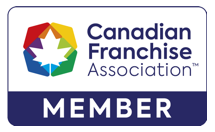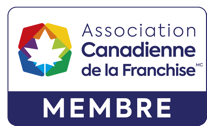The new Canada Not-for-Profit Corporations Act came into force on October 17, 2011. Not-for-profit corporations incorporated under Part II of the Canada Corporations Act are required to make the transition to the new legislation by October 17, 2014. BACKGROUND • Virtually all existing federal not-for-profit corporations are incorporated under Part II of the Canada Corporations Act. • This Act has not been significantly amended since 1917 and does not reflect modern standards regarding corporate operations and corporate governance. • The current Act governs more than 19,000 diverse not-for-profit organizations, including 7,800 registered charities. All of which will be impacted by the new Act.HIGHLIGHTS • The Canada Not-for-Profit Corporations Act benefits not-for-profit corporations by providing: – A clear set of procedural rules. – Less red tape since Corporations Canada will no longer review and approve by-laws. – More flexibility on making fundamental changes, such as amalgamations, which were not permitted under the old Act. – A more objective standard for directors in carrying out their duties and responsibilities and a due diligence defence, which will reassure individuals who decide to sit on a board of directors.
TRANSITION• The Canada Not-for-Profit Corporations Act does not automatically apply to existing not-for-profit corporations.• To have the new Act apply, a corporation must be continued under the new Act.• The Canada Corporations Act will apply to a corporation until a Certificate of Continuance is issued by Corporations Canada under the new Act.• Corporations are required to make the transition to the new Act by October 17, 2014.• Corporations that do not make the transition by the deadline will be dissolved. It is very important to note that dissolution will affect the status of a registered charity and may result in a revocation tax equal to the full value of the corporation’s remaining assets.Procedure• The corporation’s letters patent and by-laws must be reviewed for any inconsistencies with the new Act. The new Act includes default rules that will apply unless contrary rules are specified. As a result, the Act does not require the same level of detail in a corporation’s articles or by-laws as the old Act. A corporation can override many of these default rules; however, there are some rules that are mandatory.• Once the corporation determines which rules it wishes to retain, the articles of continuance must be prepared and the by-laws must be revised.• The articles of continuance and by-laws will require members’ approval. The new Act requires that the articles of continuance be approved by two-thirds of the members of the corporation.• Finally, the corporation must file the required documents with Corporations Canada to receive a Certificate of Continuance before October 17, 2004.Five General Steps to TransitionIn summary, the steps to transition include:1. Review of Current Letters Patent and By-Laws;2. Prepare Articles of Continuance or Revise Letters Patent;3. Revise By-laws;4. Obtain Members’ Approval; and5. File the Required Documents with Corporations Canada.

 2 St Clair Ave West
2 St Clair Ave West


